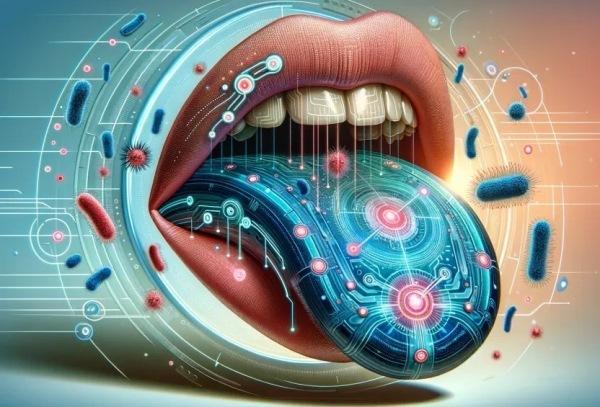The artificial tongue, or array of chemical sensors, was able to identify plaque from saliva samples, but was also able to determine that it was plaque from a person with tooth decay and destroyed it.

The authors report that this discovery may help diagnose and treat bacterial dental diseases faster and cheaper in the future.
Worldwide, bacterial infections account for 1 in 8 deaths and are responsible for dental diseases such as caries, periodontitis and peri-implantitis, which can have devastating consequences on health and quality of life in addition to other impacts.
Currently, identifying the strains of bacteria that cause a specific dental disease requires culture or searching for a specific DNA marker using expensive equipment. These methods can be time consuming and expensive.
To find a faster and more affordable way to identify specific strains of oral bacteria, researchers led by Na Lu, a professor at Shanghai University of Engineering Sciences in China, tested the accuracy and efficiency of an artificial tongue.
The team used nanoscopic particles that mimic natural enzymes, called nanozymes, made from iron oxide particles that were then coated with strands of DNA. When hydrogen peroxide and a colorless substance were added to a solution simulating saliva, the nanozymes turned bright blue. But bacteria clinging to the DNA reduced the blue tint of the solution.
The nanozymes were then coated with different strands of DNA, which when tested resulted in unique color changes. Based on this, the researchers created 11 types of dental bacteria. The artificial tongue correctly identified all bacteria in artificial saliva samples. Moreover, using a nanozyme sensor, the researchers were able to determine whether the plaque sample was taken from a healthy volunteer or from a person with dental caries.
In addition, the sensor had an antibacterial effect on some samples. Of the 11 bacterial species tested, three were inactivated, and electron microscope images showed that the sensor system had disrupted the bacteria's membranes. While more research is certainly needed, Lu and co-authors believe the sensor could be used to diagnose and more quickly treat dental diseases in the early stages, which could prevent the severe progression and associated complications of some chronic dental diseases.
“It is encouraging that this work may open up new opportunities for the prevention, diagnosis and treatment of persistent infectious diseases, as we hypothesize,” the authors added.
